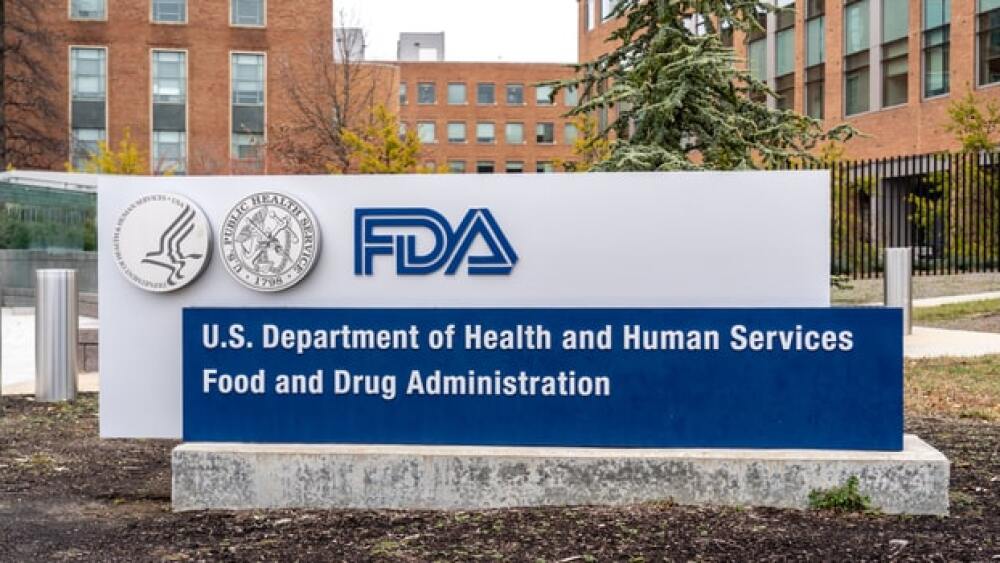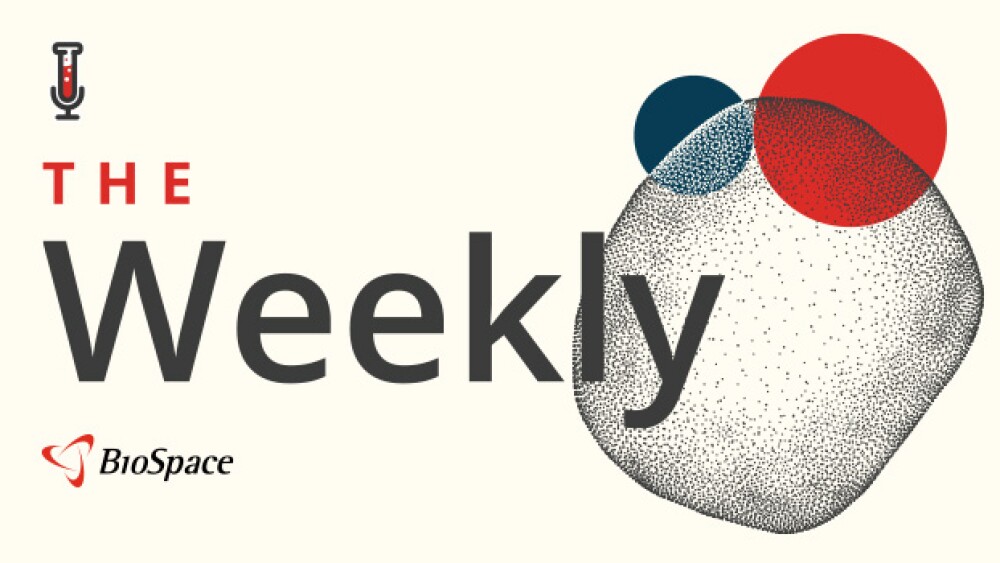Accelerated approval of DARZALEX FASPRO®-based combination regimen supported by the Phase 3 ANDROMEDA study demonstrating a significantly higher hematologic complete response rate in this rare and serious blood cell disorder [15-January-2021] HORSHAM, Pa. , Jan. 15, 2021 /PRNewswire/ -- The Janssen Pharmaceutical Companies of Johnson & Johnson announced today the
| HORSHAM, Pa., Jan. 15, 2021 /PRNewswire/ -- The Janssen Pharmaceutical Inc. Companies of Johnson & Johnson announced today the U.S. Food and Drug Administration (FDA) approval of DARZALEX FASPRO® (daratumumab and hyaluronidase-fihj), a subcutaneous formulation of daratumumab, in combination with bortezomib, cyclophosphamide and dexamethasone (D-VCd) for the treatment of adult patients with newly diagnosed light chain (AL) amyloidosis.1 DARZALEX FASPRO® is the first and only FDA-approved treatment for patients with this blood cell disorder that is associated with the production of an abnormal protein, which leads to the deterioration of vital organs, most notably the heart, kidneys and liver.2,3 This indication is approved under accelerated approval and is based on the hematologic complete response rate (hemCR) measure. Continued approval for this indication may be contingent upon verification and description of clinical benefit in a confirmatory trial. DARZALEX FASPRO® is not indicated and is not recommended for the treatment of patients with light chain (AL) amyloidosis who have NYHA Class IIIB or Class IV cardiac disease or Mayo Stage IIIB outside of controlled clinical trials. “Today’s milestone is an important step for patients diagnosed with this rare disease,” said Isabelle Lousada, Founder and CEO, Amyloidosis Research Consortium. “Sadly, most patients with AL amyloidosis are diagnosed more than one year after their initial symptoms present, at a time when they may already be experiencing organ deterioration or failure.4 I believe this approval will increase awareness of and education around this life-threatening disease and offer new hope for people with AL amyloidosis and their caregivers.” The FDA approval is based on positive results from the Phase 3 ANDROMEDA study, which were recently presented at the American Society of Hematology (ASH) 2020 Annual Meeting. The study evaluated DARZALEX FASPRO® in combination with VCd, compared with VCd alone, a common treatment regimen used in adult patients with newly diagnosed AL amyloidosis.5 Patients receiving treatment with DARZALEX FASPRO® experienced a hemCR more than triple that of patients receiving VCd alone (42 percent for D-VCd and 13 percent for VCd; P<0.0001).1 “There is an urgent need for awareness and treatment options to help in the fight against this serious blood cell disorder,” said Raymond L. Comenzo, M.D., Director, John C. Davis Myeloma and Amyloid Program, Tufts Medical Center, and ANDROMEDA study investigator. “Achieving hematologic complete response is an important treatment goal, and today’s approval based on this clinical endpoint will provide doctors and the larger medical community with a new option to treat newly diagnosed patients.” Approximately 4,500 people in the U.S. develop this rare disease each year.6 AL amyloidosis is a life-threatening blood cell disorder that occurs when blood plasma cells in the bone marrow produce amyloid deposits, which build up in vital organs and eventually cause organ deterioration.3 The disease can affect different organs in different people, but the most frequently affected organs are the heart, kidneys, liver, spleen, gastrointestinal tract and nervous system.2,3 About one-third of patients visit five or more doctors before receiving a diagnosis, and 72 percent are diagnosed more than one year after they first experience symptoms.3,4 Patients often have a poor prognosis due to the delay in diagnosis of AL amyloidosis, which frequently presents with non-specific symptoms that can mimic other, more common conditions.7 As many as 30 percent of patients with AL amyloidosis die within the first year after diagnosis.8 “DARZALEX FASPRO, as the first and only FDA-approved treatment for newly diagnosed AL amyloidosis, marks a significant advance for a disease with high unmet medical need,” said Jessica Vermeulen, M.D., Ph.D., Global Medical Head/Clinical Leader, Hematology & Oncology, Janssen Research & Development, LLC. “Today’s approval underscores our commitment to deliver innovative therapies for patients with plasma cell diseases.” The most common adverse reactions (≥20 percent) were upper respiratory tract infection, diarrhea, peripheral edema, constipation, fatigue, peripheral sensory neuropathy, nausea, insomnia, dyspnea and cough. Serious adverse reactions occurred in 43 percent of patients who received DARZALEX FASPRO® in combination with VCd. Serious adverse reactions that occurred in at least 5 percent of patients in the D–VCd arm were pneumonia (9 percent), cardiac failure (8 percent) and sepsis (5 percent). Fatal adverse reactions occurred in 11 percent of patients. Fatal adverse reactions that occurred in more than one patient included cardiac arrest (4 percent), sudden death (3 percent), cardiac failure (3 percent) and sepsis (1 percent).1 Among patients who received DARZALEX FASPRO® in combination with VCd, 72 percent of patients had baseline cardiac involvement with Mayo Cardiac Stage I (3 percent), Stage II (46 percent) and Stage III (51 percent). Serious cardiac disorders occurred in 16 percent of patients (8 percent of patients with Mayo Cardiac Stage I and II and 28 percent of patients with Stage III). Serious cardiac disorders in more than 2 percent of patients included cardiac failure (8 percent), cardiac arrest (4 percent) and arrhythmia (4 percent). Fatal cardiac disorders occurred in 10 percent of patients (5 percent of patients with Mayo Cardiac Stage I and II and 19 percent of patients with Stage III) who received DARZALEX FASPRO® in combination with VCd. Fatal cardiac disorders that occurred in more than one patient in the D-VCd arm included cardiac arrest (4 percent), sudden death (3 percent) and cardiac failure (3 percent).1 The FDA reviewed and approved this indication under the FDA Real-Time Oncology Review (RTOR) program, which allows data for certain applications to be reviewed before the applicant formally submits the complete application. The RTOR program aims to explore a more efficient and timely review process to help ensure treatments are available as soon as possible for patients. Selection into the RTOR program does not guarantee or influence approvability of the supplemental application. The submission was also reviewed under Project Orbis, an initiative of the FDA Oncology Center of Excellence, which provides a framework for concurrent submission and review of oncology medicine applications among international regulatory agencies. About the ANDROMEDA Study1 About DARZALEX FASPRO® DARZALEX FASPRO® is indicated for the treatment of adult patients with multiple myeloma:
Access to DARZALEX FASPRO® (daratumumab hyaluronidase-fihj) Full prescribing information will be available at www.DARZALEX.com. DARZALEX FASPRO™ IMPORTANT SAFETY INFORMATION CONTRAINDICATIONS DARZALEX FASPRO™ is contraindicated in patients with a history of severe hypersensitivity to daratumumab, hyaluronidase or any of the components of the formulation. WARNINGS AND PRECAUTIONS Hypersensitivity and Other Administration Reactions1 Both systemic administration-related reactions, including severe or life-threatening reactions, and local injection-site reactions can occur with DARZALEX FASPRO™. Systemic Reactions In a pooled safety population of 683 patients with multiple myeloma (N=490) or light chain (AL) amyloidosis (N=193) who received DARZALEX FASPRO™ as monotherapy or in combination, 10% of patients experienced a systemic administration-related reaction (Grade 2: 3.5%, Grade 3: 1%). Systemic administration-related reactions occurred in 9% of patients with the first injection, 0.4% with the second injection, and cumulatively 1% with subsequent injections. The median time to onset was 3.2 hours (range: 9 minutes to 3.5 days). Of the 117 systemic administration-related reactions that occurred in 66 patients, 100 (85%) occurred on the day of DARZALEX FASPRO™ administration. Delayed systemic administration-related reactions have occurred in 1% of the patients. Severe reactions included hypoxia, dyspnea, hypertension and tachycardia. Other signs and symptoms of systemic administration-related reactions may include respiratory symptoms, such as bronchospasm, nasal congestion, cough, throat irritation, allergic rhinitis, and wheezing, as well as anaphylactic reaction, pyrexia, chest pain, pruritis, chills, vomiting, nausea, and hypotension. Pre-medicate patients with histamine-1 receptor antagonist, acetaminophen and corticosteroids. Monitor patients for systemic administration-related reactions, especially following the first and second injections. For anaphylactic reaction or life-threatening (Grade 4) administration-related reactions, immediately and permanently discontinue DARZALEX FASPRO™. Consider administering corticosteroids and other medications after the administration of DARZALEX FASPRO™ depending on dosing regimen and medical history to minimize the risk of delayed (defined as occurring the day after administration) systemic administration-related reactions. Local Reactions In this pooled safety population, injection-site reactions occurred in 9% of patients, including Grade 2 reactions in 0.7%. The most frequent (>1%) injection-site reaction was injection site erythema. These local reactions occurred a median of 5 minutes (range: 0 minutes to 4.7 days) after starting administration of DARZALEX FASPRO™. Monitor for local reactions and consider symptomatic management. Cardiac Toxicity in Patients with Light Chain (AL) Amyloidosis1 Serious or fatal cardiac adverse reactions occurred in patients with light chain (AL) amyloidosis who received DARZALEX FASPRO™ in combination with bortezomib, cyclophosphamide and dexamethasone. Serious cardiac disorders occurred in 16% and fatal cardiac disorders occurred in 10% of patients. Patients with NYHA Class IIIA or Mayo Stage IIIA disease may be at greater risk. Patients with NYHA Class IIIB or IV disease were not studied. Monitor patients with cardiac involvement of light chain (AL) amyloidosis more frequently for cardiac adverse reactions and administer supportive care as appropriate. Neutropenia1 Thrombocytopenia1 Embryo-Fetal Toxicity1 The combination of DARZALEX FASPRO™ with lenalidomide is contraindicated in pregnant women, because lenalidomide may cause birth defects and death of the unborn child. Refer to the lenalidomide prescribing information on use during pregnancy. Interference with Serological Testing1 Notify blood transfusion centers of this interference with serological testing and inform blood banks that a patient has received DARZALEX FASPRO™. Type and screen patients prior to starting DARZALEX FASPRO™. Interference with Determination of Complete Response1 ADVERSE REACTIONS1 The most common adverse reactions (≥20%) in patients with light chain (AL) amyloidosis who received DARZALEX FASPRO™ are upper respiratory tract infection, diarrhea, peripheral edema, constipation, fatigue, peripheral sensory neuropathy, nausea, insomnia, dyspnea, and cough. The most common hematology laboratory abnormalities (≥40%) with DARZALEX FASPROTM are decreased leukocytes, decreased lymphocytes, decreased neutrophils, decreased platelets, and decreased hemoglobin. Please see full Prescribing Information at www.DARZALEX.com. About the Janssen Pharmaceutical Companies of Johnson & Johnson Learn more at www.janssen.com. Follow us at www.twitter.com/JanssenGlobal and www.twitter.com/JanssenUS. Janssen Biotech, Inc. and Janssen Research & Development, LLC are part of the Janssen Pharmaceutical Companies of Johnson & Johnson. Cautions Concerning Forward-Looking Statements 1 DARZALEX FASPRO® Prescribing Information. Horsham, PA: Janssen Biotech, Inc. Media contacts: Satu Glawe Investor Relations: U.S. Medical Inquiries: SOURCE Janssen Pharmaceutical Companies of Johnson & Johnson |




